You’ve likely noticed the terms “Indie,” “AA,” and “AAA” thrown around. The distinctions between Indie, Double A vs Triple A games lie in the size of the development teams, budgets, creative freedom, production values, and target audiences. While Indie games focus on creative freedom, AA games aim for balance, and AAA games prioritize mass-market appeal and blockbuster production values.
Understanding Game Development Categories
What sets Indie, Triple A vs Double A games apart? The key differences lie in the development budget and quality classification. AA games are typically developed with a smaller budget than their AAA counterparts. This difference in funding directly affects gameplay design, as AAA games often have more resources to invest in graphics, mechanics, and overall polish. However, it’s important to note that classifying games solely based on their budget doesn’t capture the whole picture. Game development platforms play a significant role as well. Independent studios or individuals, for instance, often create indie games with few resources but a high level of creativity. Understanding the nuances of Indie, AA vs AAA games is crucial to unraveling the diverse landscape of the gaming industry.
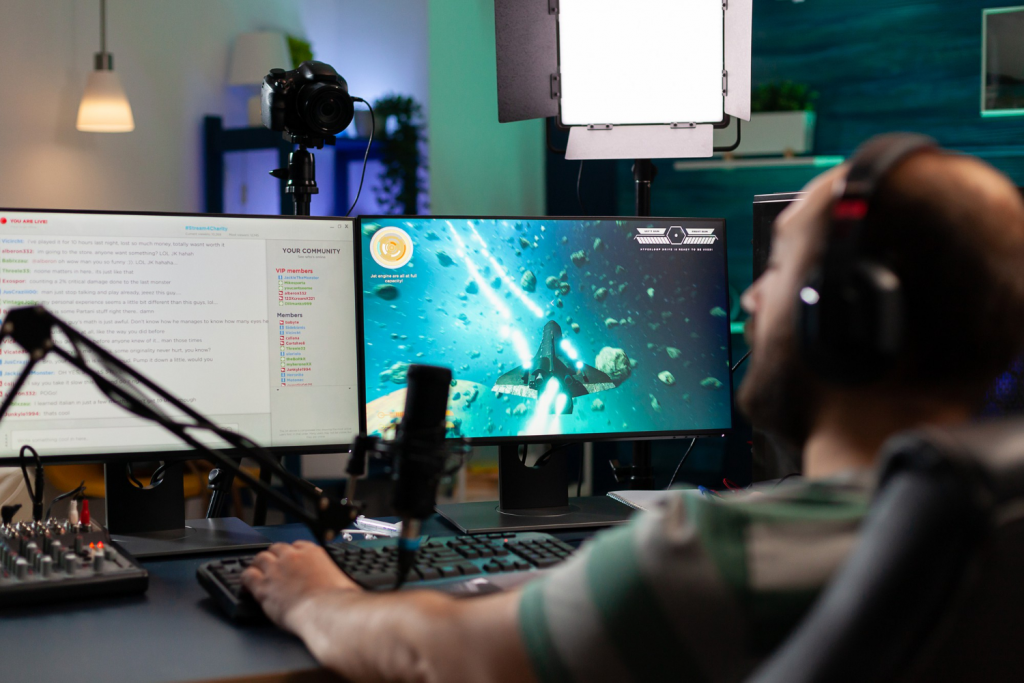
Indie Games: Features And Characteristics
Indie Game, short for “independent,” refers to games developed by small indie studios, often self-funded teams or solo developers. These games are about creative freedom and unique, often niche, concepts. One notable difference between indie games and AAA games is the graphics. While AAA games boast high-quality visuals and realistic graphics, indie games often prioritize art style and creativity over graphical fidelity. Exploring the budget constraints of indie game development reveals that limited financial resources drive developers to be resourceful and innovative. This leads to diverse gameplay designs that break free from traditional norms. Indie games truly offer a refreshing and distinct experience in gaming. We hope we cleared for you what does indie mean in games.
Artistic Expression and Innovation
Indie game development is a platform for creative freedom, allowing developers to explore unique art styles. It embraces the punk ethos of the gaming industry, pushing boundaries in gameplay design and mechanics. Online sources play a significant role in influencing indie game development, providing inspiration and resources for developers. Indie games challenge traditional norms and offer fresh experiences for players. Through their innovative approach, indie developers can experiment with different art styles, storytelling techniques, and gameplay mechanics. This diversity in style and content enriches the gaming landscape, ensuring players have a wide range of experiences. Indie game development.
AA Games: Striving for Quality
AA games strike a unique balance between indie and AAA games, offering players an experience that is a step above indie titles but not quite at the level of AAA blockbusters. The development of AA games differs between the United States and the United Kingdom, with each region contributing to the growth and innovation of this emerging category. As the term “AA games” gains traction in the gaming industry, it is interesting to explore its current usage and how it represents a new wave of creativity and innovation. AA games bring fresh ideas and gameplay mechanics, pushing the boundaries of what can be achieved within a smaller budget. AA games offer a compromise in a market where AAA games predominate by offering players a variety of engaging experiences.
Enriching Gameplay Experiences
Techniques in AA game creation involve optimizing graphics and gameplay design, balancing the development budget with game quality, leveraging new technology and graphics innovations, incorporating storytelling and narrative design, and embracing current trends and gameplay mechanics. Developers maximize the visual and interactive experience within a reasonable budget when developing an AA game. They use techniques to optimize the graphics and gameplay design, ensuring the game is visually appealing and engaging for players. Additionally, they carefully balance the development budget to ensure the game meets high-quality standards without exceeding financial limitations. AA game developers also incorporate storytelling and narrative design to create immersive and captivating narratives that keep players engaged throughout the game.
AAA Games: The Epitome of Scale and Polish
AAA games have set the standard in the gaming industry, being the powerhouse titles that dominate the market. Behind the scenes, AAA game development involves massive budgets and extensive resources to create the big-budget games we love. Graphics and gameplay design in AAA games starkly contrast to AA games, with AAA games pushing the boundaries of realism and immersion. The development budget significantly impacts the quality of AAA games, allowing for cutting-edge technology and high production values. These games shape the industry, driving innovation and shaping trends in gaming.
Grandiose Scope and Unforgettable Gameplay
The design choices made by game industry giants play a crucial role in developing AAA games. Every decision is carefully considered to deliver an unforgettable gaming experience, from the art direction to the gameplay mechanics. Additionally, the impact of the development budget on gameplay design and quality cannot be overlooked. Higher budgets allow more resources to be allocated towards refining the game mechanics and ensuring a polished final product.
Collaborations and partnerships are also common in the AAA game development scene. Developers often collaborate with other studios, artists, and musicians to create memorable experiences that resonate with players worldwide. This global approach to development brings together diverse talents and perspectives, resulting in truly innovative and groundbreaking games.

The Vital Features That Set Apart Indie, AA, and AAA Games
| Indie Games | AA Games | AAA Games |
| 1. Small Teams Typically, a small group of people or even a single developer creates independent games. This small team size allows for a more personal touch and creative control; | 1. Medium-Sized Studios Mid-sized game development studios create AA games that have more resources than Indie teams but are still smaller than AAA studios; | 1. Large Studios Major studios develop AAA games with hundreds or even thousands of employees. These studios or publishers have extensive infrastructure and resources; |
| 2. Limited Budget Indie developers often work with limited budgets, relying on their savings, crowdfunding, or early access sales. This constraint can foster innovation and resourcefulness; | 2. Moderate Budgets These games often have moderate budgets, enabling them to deliver polished graphics, gameplay, and narrative experiences without the astronomical costs of AAA production; | 2. High Budgets The production budgets for AAA games are massive, often exceeding tens or even hundreds of millions of dollars. It allows for top-tier graphics, voice acting, and marketing campaigns; |
| 3. Artistic Freedom Indie games prioritize artistic vision and unique gameplay mechanics over mass-market appeal. They often explore unconventional themes and genres; | 3. Balanced Creativity and Commercial Appeal AA games balance creative freedom and the need for commercial viability. They aim to appeal to a broader audience while maintaining some unique features; | 3. Broad Appeal AAA games aim for mass-market appeal and target a global audience. They often incorporate tried-and-true gameplay mechanics and genres; |
| 4. Diverse Genres Indie games span various genres, from narrative-driven adventures to experimental puzzle games and everything in between; | 4. Varied Genres AA games cover various genres, including action-adventure, RPG, and simulation games. They can compete with AAA titles in specific niches; | 4. Blockbuster Titles AAA games are often blockbuster titles with cinematic storytelling, breathtaking visuals, and intricate game mechanics. They’re typically associated with major franchises; |
| 5. Digital Distribution Indie games are commonly distributed through digital platforms like Steam, Twitch, or mobile app stores. They are short of a marketing budget and, therefore, can’t afford substantial marketing efforts and promotional events. | 5. Digital and Limited Physical Distribution AA games are primarily distributed digitally, but some may receive limited physical releases, especially for collector’s editions. | 5. Extensive Marketing AAA games receive substantial marketing efforts, including trailers, teasers, and promotional events. They often generate significant hype before release and use quite impressive marketing budgets for these purposes; |
| 6. Global Distribution AAA games receive global distribution across multiple platforms, including physical releases and digital distribution. |
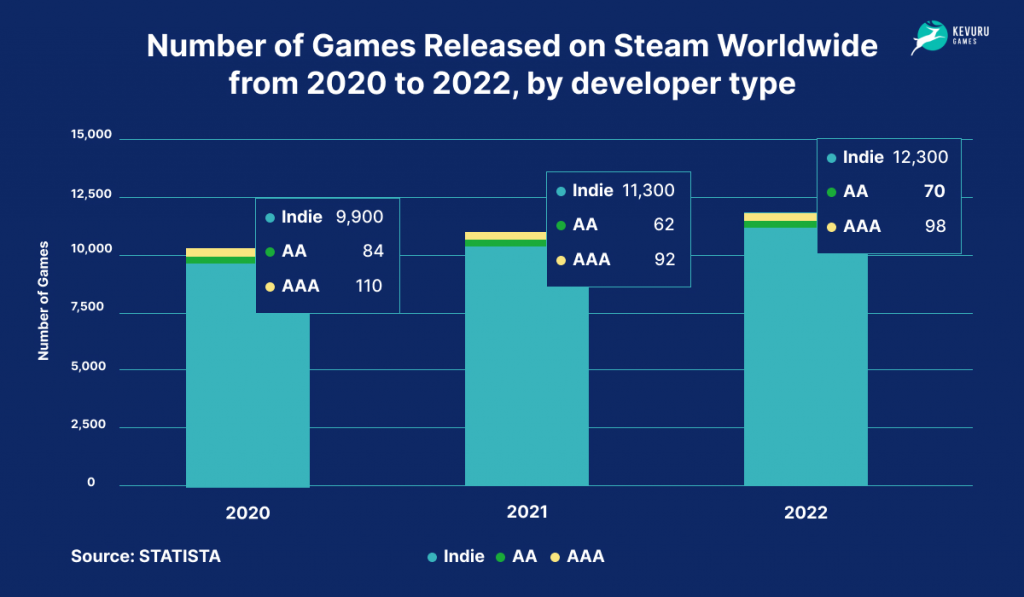
The Evolution and Future Trends in Gaming
The world of gaming has undergone a remarkable transformation since its humble beginnings. From pixelated arcade games to immersive virtual reality experiences, the evolution of gaming is extraordinary. In this exploration, we’ll journey through the past, present, and future of Indie, AA games vs AAA games, unveiling the trends that are shaping its destiny.
The Past: From Pong to 8K Realism
The history of gaming traces back to the early days of arcades and home consoles. Pong, the iconic table tennis simulation, marked the birth of video gaming in the 1970s. Later we witnessed the rise of platformers with Super Mario, the emergence of 3D graphics with the Nintendo 64, and the era of online gaming with titles like World of Warcraft.
The Present: Gaming for Everyone
Gaming is a global phenomenon transcending age, gender, and cultural boundaries. Here are some trends that define the current gaming landscape:
- Mobile Gaming: The ubiquity of smartphones has given rise to a thriving mobile gaming market. Casual gamers and hardcore enthusiasts can enjoy various titles on their devices.
- Esports: Competitive gaming, or esports, has grown into a billion-dollar industry. Professional players, teams, and tournaments draw massive audiences worldwide.
- Virtual Reality (VR) and Augmented Reality (AR): VR and AR technologies redefine immersion. Players can step into virtual worlds, interact with holographic elements, and experience gaming in ways previously unimaginable.
- Cross-Platform Play: Gamers on different devices can play together, breaking down barriers and fostering community.
The Future: Shaping the Next Generation of Gaming
The future of gaming is an exciting frontier that promises even greater innovation and immersion. Here are some trends shaping the path forward:
- Cloud Gaming: Cloud gaming services make high-quality gaming accessible on many devices, reducing the need for powerful hardware.
- Realistic Graphics: With advancements like ray tracing and 8K resolution, games are achieving levels of realism that were once reserved for Hollywood blockbusters.
- Artificial Intelligence (AI): AI enhances gameplay through dynamic storytelling, intelligent NPCs, and adaptable game mechanics.
- Metaverse: The concept of a metaverse, a shared, interconnected virtual space, is gaining traction. It could revolutionize how we socialize, work, and play in digital environments.
- Neurogaming: Brain-computer interfaces and neurofeedback technology are emerging, opening up possibilities for gaming experiences controlled by our thoughts.
As we gaze into the future of Indie, AAA vs AA games, one thing is clear: the possibilities are endless. With each technological leap and creative spark, gaming continues redefining itself, promising new adventures and experiences for generations. Whether you’re a nostalgic fan of the classics or an eager explorer of the latest innovations, gaming has something for everyone, and its future is filled with excitement and limitless potential.

Kevuru Games Expertise in AAA and AA Game Development
One of Kevuru Games’ standout features is our proficiency as AAA Game Art Studio. This versatility allows us to cater to a wide range of clients, from major publishers to medium studios. Our team consists of highly skilled professionals who are passionate about gaming. From talented artists and designers to expert programmers and project managers, the team at Kevuru Games is dedicated to delivering success to your project.
Kevuru Games offers full-cycle game dev services to meet the diverse needs of their clients. From concept art and character design to level creation and optimization, we offer our skills and resources to handle every aspect of game development. This comprehensive approach streamlines the development process and ensures a cohesive and polished end product. Your requirements define how much does it cost to make a triple a game.
Our expertise spans multiple genres, including MMOG, adventure, strategy, puzzles, educational games, board games, and role-playing games. Our mission is to provide game publishers with full-cycle game development production and give our clients player-centric advice on in-game investments. You are always welcome to examine our AAA art portfolio.
We offer a full range of game development services, including:
- Fully executed development;
- Concept art and design;
- Quality assurance and testing;
- Game monetization consultations;
- Post-release support.


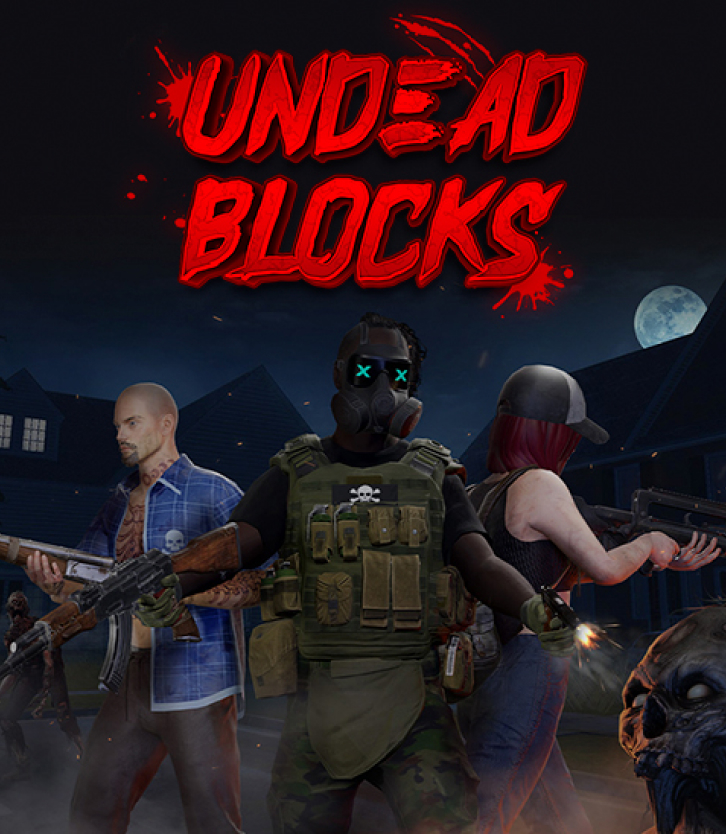
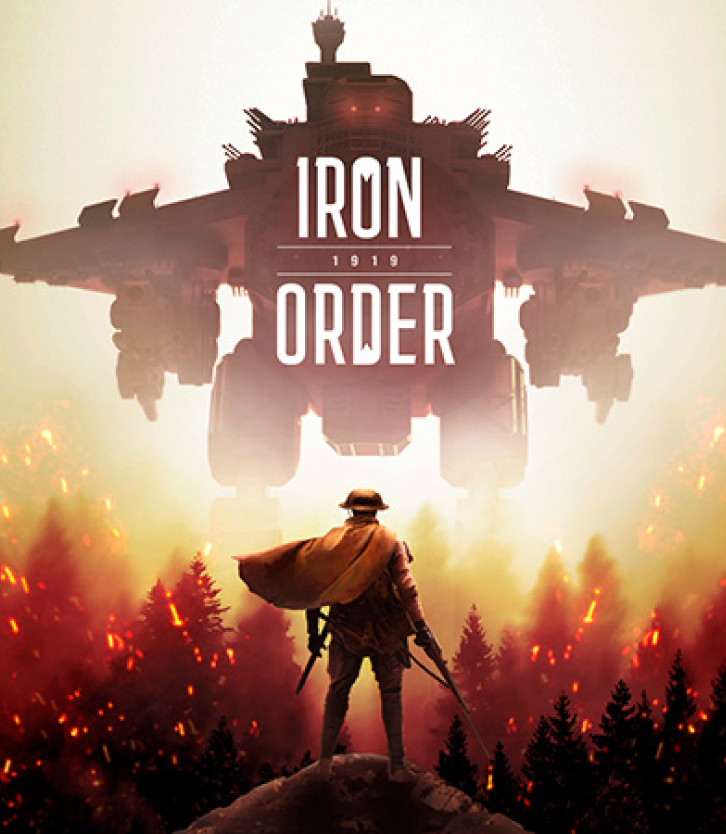


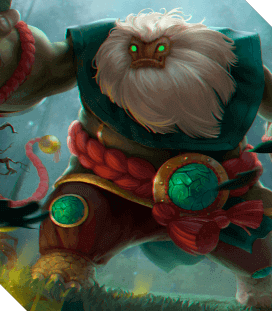



![Indie Game Development: Guide to Revenues, Most Profitable Genres & Monetization [+10 Best Indie Games 2024]](https://kevurugames.com/wp-content/uploads/fly-images/11949/indie-pre-138x138.jpg)